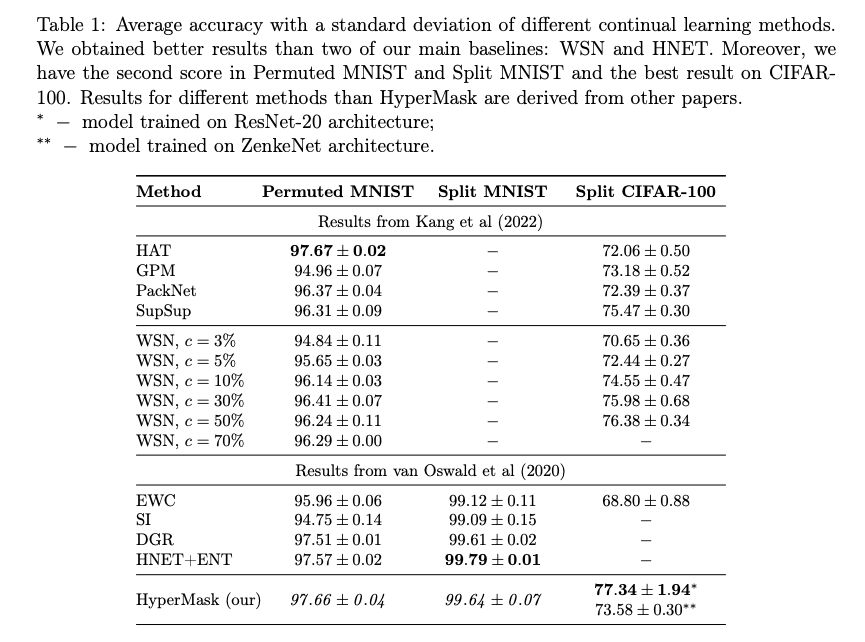Continual learning is a key area of artificial intelligence (AI) that aims to allow neural networks to learn from ongoing data streams without forgetting previously learned knowledge. This is similar to how humans continuously learn and apply knowledge throughout our lives. However, implementing effective continual learning in machines is difficult due to issues like catastrophic forgetting. This is when a network forgets previously learned tasks after being trained on new ones.
A potential solution is proposed in the recent paper HyperMask: Adaptive Hypernetwork-based Masks for Continual Learning. This post explains the main ideas of HyperMask in an understandable way.

HyperMask: A New Approach to Continual Learning
HyperMask uses hypernetworks to create adaptive masks for the main network. These masks adjust the network’s weights when learning new tasks, which helps preserve knowledge from previous tasks while still learning the new ones effectively. It’s like a smart filter that guides the network’s attention to enable better continual learning.
What are Hypernetworks?
To understand HyperMask, it helps to know about hypernetworks first. A hypernetwork is a smaller network that sets parameters for a larger main network. It’s like a guide giving real-time directions to keep the main network on track while adapting to changing conditions. Hypernetworks help dynamically change the main network’s learning parameters to handle the challenges of continual learning.

How HyperMask Works
In HyperMask, the hypernetwork generates masks that are applied to the main network’s weights when training on new tasks. These masks act as filters to preserve important features from old tasks while letting the network adapt to new data. The key is that the masks are adaptive and tailored for each task. This helps optimally balance retaining old knowledge and learning new information.
Why HyperMask Matters
The approach used by HyperMask has significant implications. It directly tackles the catastrophic forgetting problem, enabling more robust and efficient continual learning systems. This progress moves us closer to creating machines that can autonomously learn and adapt like humans do.
The adaptive masking technique also enables versatile learning systems that can handle dynamic real-world scenarios. It has many potential applications ranging from autonomous systems to healthcare and more.
In Summary
HyperMask provides a promising way to address catastrophic forgetting and make continual learning more powerful and practical. Its adaptive hypernetwork-based mask approach shows the innovative work being done in AI to bring machine learning closer to human learning abilities. The full paper has more technical details for those who want to learn more.